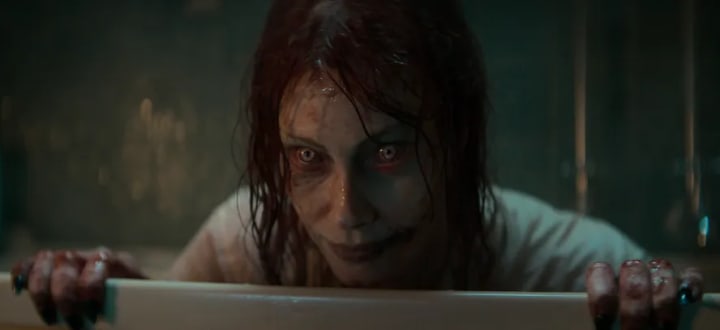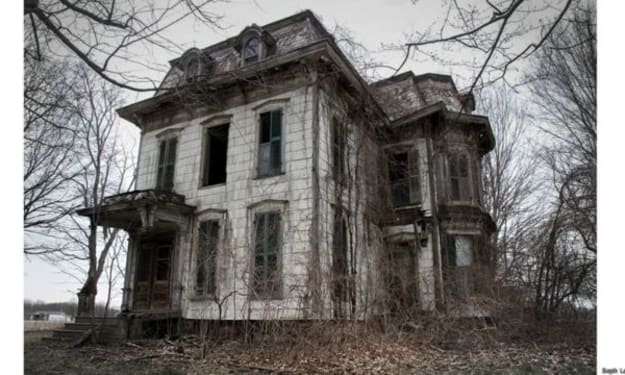Content warning
This story may contain sensitive material or discuss topics that some readers may find distressing. Reader discretion is advised. The views and opinions expressed in this story are those of the author and do not necessarily reflect the official policy or position of Vocal.
The Dark Inspiration: Tales and Myths that Influenced Horror Cinema
Immerse yourself in the chilling story behind a horror movie with this comprehensive guide. Discover the twisted tale that inspired the scares on screen.

The Creepy Story Behind a Horror Movie
With the arrival of the Halloween season, many people are looking forward to watching horror movies that promise to make even the toughest hair stand on end. But have you ever stopped to think that behind these scary stories, there is often a basis in reality? That's right, many horror films were inspired by real events, which adds an even more disturbing touch to the plots. In this article, we're going to explore the chilling story behind a horror movie and uncover how real events can be the source of inspiration for stories that make us jump out of our seats. So, get ready to dive into this spooky journey in search of the truth behind a fact-based horror movie. Ready to discover what lurks in the shadows?
Behind the Camera: The Scary Behind the Scenes of Production
Since the dawn of cinema, the horror genre has been an inexhaustible source of inspiration for filmmakers around the world. Behind the frightening stories and terrifying characters lies a rich legacy of tales and myths that have helped shape the narrative of horror cinema.
One of the most interesting aspects of this genre is the way in which many films are based on real events or legendary stories. The mix between reality and the imaginary creates an even more sinister and intriguing atmosphere, after all, who doesn't like a good horror movie based on fact?
A classic example of this dark inspiration is the movie "The Exorcist" (1973), directed by William Friedkin. The feature film is based on the book of the same name by William Peter Blatty, who in turn was influenced by a real case of exorcism that took place in 1949. The story of a young woman possessed by the devil enchanted audiences around the world, setting a new standard for the genre.
Another notable example is the movie "Psycho" (1960), directed by Alfred Hitchcock. The iconic psychopath Norman Bates was inspired by the serial killer Ed Gein, known for his acts of necrophilia and cannibalism. This connection with reality brought a sense of authenticity to the film's terrifying scenes, making it a landmark in the psychological thriller genre.
These are just a few of the many examples of how the history of horror cinema has been enriched by inspiration from tales and myths based on real events. It is this combination of fictional and real elements that makes these films so popular with lovers of the genre. After all, nothing is scarier than something that has a ring of truth to it.
When we watch a horror movie, we are immersed in a dark and frightening world, where fear is palpable. However, we know little about what goes on behind the scenes during the production of these works of fiction. After all, how are the scary scenes that make us jump out of our seats created?
Behind all the magic of cinema, there is the hard and meticulous work of professionals specializing in visual and sound effects. To create a terrifying environment, every detail is carefully thought out, from the choice of filming location to the lighting and soundtrack. But when it comes to horror films based on real events, the pressure is even greater.
These movies have the mission of making us believe that everything we're seeing really happened. And that's why the backstage of these productions is so frightening. Actors subject themselves to long hours of make-up and prosthetics to create the effect of mutilation and blood, while directors have to find ways to portray shocking scenes without going beyond the limits of good taste.
The backstage of a horror production is full of curious and macabre stories. And it's these stories that allow us to appreciate all the effort and dedication behind those haunting films we love so much. The next time you're watching a horror movie, remember that behind the scenes, there's a lot of hard and scary work that goes into making that fact-based horror movie story as real as possible.
Key Elements: What Makes a Horror Movie Truly Terrifying
Horror movies have the power to arouse fear and chills in people, but what really makes a horror movie truly terrifying? There are a few key elements that can contribute to the success of this scary movie genre.
One of the most important elements is the story. A well-constructed story is key to holding viewers' attention and creating an atmosphere of suspense. A good horror movie must involve the audience, making them care about the characters and feel immersed in the plot. The story must be intriguing, with unexpected twists and turns, and explore supernatural, psychological or even real themes, generating a sense of unease and disquiet.
Another fundamental element of a successful horror movie is the scary and suspenseful scenes. The right use of lighting, sound, make-up and special effects can intensify the feeling of fear and create unforgettable moments of tension. The suspenseful scenes should leave the viewer on the edge of their seat, anxious to find out what will happen next. In addition, a truly terrifying horror film should have scenes that explore the deepest and most universal fears of human beings, such as the fear of the unknown, death, loss and loneliness.
Finally, the emotional impact of a horror movie is also essential to making it truly terrifying. A good horror movie must stir the audience's emotions, whether it's intense fear, a feeling of claustrophobia or even disgust. The emotions aroused should be long-lasting, causing the viewer to leave the theater or turn off the TV and still feel the consequences of the fear in their body and mind.
At the end of the day, a truly terrifying horror film is one that manages to combine all these elements into a frightening and memorable cinematic experience. Story, frightening and suspenseful scenes, and emotional impact are all key aspects to creating a movie that truly leaves the viewer scared. So the next time you watch a horror movie, pay attention to these key elements and prepare yourself for a truly terrifying experience.
From Page to Screen: Film Adaptations of Horror Stories

Horror movie stories have fascinated audiences over the years and cinema has proved to be a perfect platform for bringing these frightening narratives to life. It's interesting to see how adaptations of horror stories on the big screen have evolved over time, from their humble origins in the pages of books to the special effects-laden cinematic productions we see today.
One of the first adaptations of horror stories for the cinema dates back to the beginning of the 20th century, with the era of silent films. The classic "Nosferatu" (1922), directed by F.W. Murnau, brought to the screen the story of the vampire Count Orlok. Murnau, brought to the screen the story of the vampire Count Orlok, based on the novel "Dracula" by Bram Stoker. This film laid a solid foundation for future adaptations of horror stories, with its dark atmosphere and frightening visuals.
Over the years, adaptations of horror stories have become increasingly complex and sophisticated. Films such as "The Exorcist" (1973), based on the novel by William Peter Blatty, and "The Shining" (1980), based on the book by Stephen King, engaged audiences with their stories of demonic possession and psychological terror. These films brought a new layer of realism to adaptations of horror stories, leaving viewers unnerved and afraid. Today, the film industry continues to adapt horror stories from various sources, including short stories, novels and even video games. With advances in technology, filmmakers are able to create even more intense horror experiences, with impressive special effects and haunting visuals. And even though some adaptations may not meet the expectations of fans of the original story, there's no denying the lasting impact these adaptations have on popular culture and viewers' imaginations.
About the Creator
Ricardo de Moura Pereira
I love to read writing and watch many documentaries in history, to have more knowledge in all science.
I work with digital marketing, and create articles for newspapers and marketing content.






Comments
There are no comments for this story
Be the first to respond and start the conversation.